 April 22, 2022 DWR Partners with California Rice Commission The Department of Water Resources (DWR) has provided $8 million dollars to the California Rice Commission’s ‘California Ricelands Waterbird Foundation’ to help increase the amount of available flooded habitat for migratory birds making their journey along the Pacific Flyway this year. Current drought conditions have reduced summer flooding of semi-permanent wetlands in the Sacramento Valley, reducing essential resources for breeding waterfowl, shorebirds, and other wetland-dependent species that are severely impacted by the drought. This past winter and through the spring, DWR supported a collaboration of multiple partners, including Audubon California, Ducks Unlimited, The Nature Conservancy, California Department of Fish and Wildlife (CDFW) and others, to create nearly 55,000 acres of flooded waterbird habitat on rice fields and private wetlands by providing incentive payments to wetland owners to flood (or hold water from winter flooding) their wetlands to a depth of 12 to 24 inches beginning April 1, 2022 until July 15, 2022. After July 15, wetland managers will rely on evaporation (vs. draining) to draw down flooded fields, extending vital habitat for migrating shorebirds who prefer shallow waters. As the DWR manages California’s water needs during this water supply crisis, actions and projects like this one to minimize the impacts of drought and water management on our environment (while still meeting the needs of our communities’ health and safety, our economy, and agriculture), will significantly benefit wildfowl migrating up and down the Western United States as well as those who live in the Valley year-round. Flood Safety Stakeholder Technical Workshop The Oroville Dam Citizens Advisory Commission held a virtual Flood Safety Stakeholder Technical Workshop on April 22 to allow the California Natural Resources Agency (CNRA), DWR, and other government officials hear directly from and speak directly to community stakeholders about their goals, interests and concerns related to flood safety and downstream communities. Presentations on extreme precipitation, managing floods, forecasting, and how dams, channels, floodplains, burn scars, and adequate preparations impact flooding and response were provided. Stakeholders and public participants asked questions and offered comments. The meeting transcript and presentations will be available on the Commission’s website in the coming weeks https://bit.ly/OrovilleCAC.  GRAZING GOATS REDUCE FIRE RISK Hillsides along the Dan Beebe trail near Hyatt Powerplant and Oroville Dam’s Lower Overlook are looking different as 600 goats and sheep from the Hanski Family Farms are visiting the area. The goal for this grazing effort is to minimize the rate of spread of a potential fire by reducing ground fuels, ladder fuels, and overgrown vegetation on approximately 35 acres near Oro Dam Boulevard East. Grazing is gaining popularity across California as a sustainable method to minimize wildfire risk and lessen the spread of a wildfire through vegetation management. The goats and sheep near Hyatt Powerplant will graze on grasses, leaves, poison oak, and a variety of shrubs and trees. By standing on their hind legs, they can reduce ladder fuels up to six feet high. Plus, they love to eat weeds, especially invasive ones. The goat grazing project is part of DWR’s Fuel Load Management Plan, which helps reduce wildfire risk, increase public safety, and enhance forest health in areas around Lake Oroville within the Federal Energy Regulatory Commission (FERC) project boundary. In partnership with Butte County Fire Safe Council, DWR continues to use grazing as a sustainable method of fuel reduction around DWR’s Oroville-Thermalito Complex. To learn more and to see goat grazing in action, visit DWRs YouTube Channel for a video of the March 2021 Lakeland Boulevard goat grazing project on DWR’s YouTube webpage. 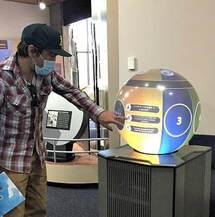 OROVILLE RECREATION The Loafer Point, Bidwell Canyon, and Lime Saddle boat ramps are open. The Oroville Dam Spillway boat ramp remains closed for repairs. The Foreman Creek and Stringtown cartop boat ramps are also open. Information on current boat ramp status can be found on the California State Parks’ Lake Oroville State Recreation Area webpage. Scroll down to the link for “Current Launch Ramp Status”. The Lake Oroville Visitor Center is open to the public on Tuesdays, Wednesdays, and Thursdays from 9 a.m. to 5 p.m. Pick up the Lake Oroville Trails Map, which shows more than 91 miles of trails available to equestrians, bicyclists, and hikers, at Lake Oroville State Recreation Area (LOSRA) kiosks, the Oroville Area Chamber of Commerce, and Feather River Recreation and Parks District. The Loafer Creek Recreation Area continues to be closed due to waterline repair (boat ramp and trail access allowed). Visit the California Parks LOSRA webpage for current information on facility status and campground reservations. An interactive map of recreation facilities in DWR’s Oroville-Thermalito Complex is available on DWR’s Lake Oroville Recreation webpage. Information about the 11,000-acre Oroville Wildlife Area is available on the California Department of Fish and Wildlife webpage. CURRENT LAKE OPERATIONS The elevation of Oroville’s reservoir is about 764 feet elevation and storage is about 1.81 million acre-feet, which is 51 percent of its total capacity and 68 percent of historical average. Dry and warmer conditions are forecasted this weekend and into the week with temperatures in the mid-70s to low-80s. Because of the recent rain, average daily inflows this week have been between 6,000 to 10,000 cubic feet per second (cfs) and are projected to remain in this range through the weekend and into next week. Flows to the Feather River are 800 cfs. Flow in the low-flow channel through the City of Oroville is 650 cfs and flow through the Thermalito Afterbay Outlet currently is 150 cfs. Flows are assessed daily. The public can track precipitation, snow, reservoir levels, and more at the California Data Exchange Center at www.cdec.water.ca.gov. The Lake Oroville gage station is identified as “ORO”. All data as of midnight 4/21/2022 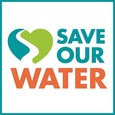 California is entering its third year of drought conditions. With water conservation now a way of life in California, everyone is encouraged to find ways to save water. See tips, tools, and ideas on the Save Our Water website. Information about real time local hydrological conditions, forecasts, and water conditions is available on DWR’s new website California Water Watch. 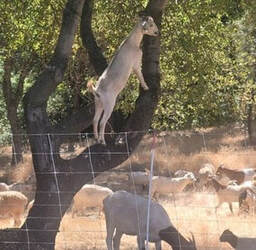 April 15, 2022 Flood Safety Stakeholder Technical Workshop On Friday, April 22, from 9 a.m. to noon, the Oroville Dam Citizens Advisory Commission will be sponsoring a Flood Safety Stakeholder Technical Workshop. The purpose of this virtual workshop is to allow the California Natural Resources Agency (CNRA), California Department of Water Resources (DWR), and other government officials to hear directly from and speak directly to community stakeholders about their goals, interests and concerns related to flood safety and downstream communities. There will be time for community stakeholder questions and comments following each presentation, and there will be additional time for questions and comments from community stakeholders during a public comment period following the presentations. For more information about the virtual workshop please visit: https://bit.ly/OrovilleCAC. Grazing Goats Reduce Fire Risk Hillsides along the Dan Beebe Trail near Hyatt Powerplant and Oroville Dam’s Lower Overlook will look different after 600 goats and sheep from the Hanski Family Farms visit the area. The goal for this grazing effort is to minimize the rate of spread of a potential fire by reducing ground fuels, ladder fuels, and overgrown vegetation on approximately 35 acres near Oro Dam Boulevard East. Grazing is gaining popularity across California as a sustainable method to minimize wildfire risk and lessen the spread of a wildfire through vegetation management. The goats and sheep near Hyatt Powerplant will graze on grasses, leaves, poison oak, and a variety of shrubs and trees. By standing on their hind legs, they can reduce ladder fuels up to six feet high. Plus, they love to eat weeds, especially invasive ones. The goat grazing project is part of DWR’s Fuel Load Management Plan, which helps reduce wildfire risk, increase public safety, and enhance forest health in areas around Lake Oroville within the Federal Energy Regulatory Commission (FERC) project boundary. In partnership with Butte County Fire Safe Council, DWR continues to use grazing as a sustainable method of fuel reduction around DWR’s Oroville-Thermalito Complex. To learn more and to see goat grazing in action, visit DWRs YouTube Channel for a video of the March 2021 Lakeland Boulevard goat grazing project on DWR’s YouTube webpage.  Feather River Fish Hatchery Opens All but one of the California Department of Fish and Wildlife (CDFW) fish hatcheries are open. The hatcheries have been closed for nearly two years during the COVID-19 pandemic. The main Feather River Fish Hatchery facility in Oroville is now open from 7:30 a.m. to 4 p.m. seven days a week. The viewing window and overlook side will continue to be open sunrise to sunset. Learn how the hatchery raises Chinook salmon and steelhead to support California’s salmon populations during your visit. Interpretive panels describing the salmon life cycle, hatchery operations, and more are available for visitors. A virtual tour of the hatchery is also available on the Department of Water Resources (DWR) YouTube channel. Guided tours of the hatchery will resume when the fall-run Chinook salmon return to the river later this year. The Feather River Fish Hatchery (FRFH) is divided into 2 sections:
The Feather River Fish Hatchery is a California State Water Project facility owned and maintained by DWR, which funds hatchery operations. CDFW operates the hatchery, including fish spawning, rearing, and stocking activities. DWR built the fish hatchery to mitigate the impact of the Oroville Dam on Chinook salmon and steelhead populations because the dam blocks access to natural spawning grounds further upstream. 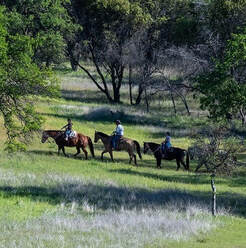 Oroville Recreation The Loafer Point, Bidwell Canyon, and Lime Saddle boat ramps are open. The Oroville Dam Spillway boat ramp remains closed for repairs. The Foreman Creek and Stringtown cartop boat ramps are also open. Information on current boat ramp status can be found on the California State Parks’ Lake Oroville State Recreation Area webpage. Scroll down to the link for “Current Launch Ramp Status”. The Lake Oroville Visitor Center is open to the public on Tuesdays, Wednesdays, and Thursdays from 9 a.m. to 5 p.m. Pick up the Lake Oroville Trails Map, which shows more than 91 miles of trails available to equestrians, bicyclists, and hikers, at Lake Oroville State Recreation Area (LOSRA) kiosks, the Oroville Area Chamber of Commerce, and Feather River Recreation and Parks District. The Loafer Creek Recreation Area continues to be closed due to waterline repair (boat ramp and trail access allowed). Visit the California Parks LOSRA webpage for current information on facility status and campground reservations. An interactive map of recreation facilities in DWR’s Oroville-Thermalito Complex is available on DWR’s Lake Oroville Recreation webpage. Information about the 11,000-acre Oroville Wildlife Area is available on the California Department of Fish and Wildlife webpage. Current Lake Operations The elevation of Oroville’s reservoir is about 754 feet elevation and storage is about 1.71 million acre-feet, which is 48 percent of its total capacity and 66 percent of historical average. Temperatures in the mid-to-upper-60s and rain is forecasted on Saturday with cooler temperatures and chance of rain continuing into next week. The average daily inflows this week have been between 3,000 to 5,000 cubic feet per second (cfs). Inflows into Lake Oroville this weekend may be in the range of 5,000 to 7,000 cfs due to the forecasted rain in the Feather River Basin. Throughout April, total flows to the Feather Rivers have been reduced to conserve storage. As of Friday, April 15, total flows to the Feather River are at 800 cfs. At 800 cfs to the Feather River, flow in the low-flow channel through the City of Oroville is 650 cfs and flow through the Thermalito Afterbay Outlet currently is 150 cfs. Flows are assessed daily. The public can track precipitation, snow, reservoir levels, and more at the California Data Exchange Center at www.cdec.water.ca.gov. The Lake Oroville gage station is identified as “ORO”. All data as of midnight 4/14/2022  California is entering its third year of drought conditions. With water conservation now a way of life in California, everyone is encouraged to find ways to save water. See tips, tools, and ideas on the Save Our Water website. Information about real time local hydrological conditions, forecasts, and water conditions is available on DWR’s new website California Water Watch. 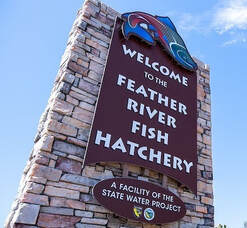 April 8, 2022 Feather River Fish Hatchery Opens The California Department of Fish and Wildlife (CDFW) announced starting April 7, they will be re-opening 21 of the 22 state fish hatcheries. The hatcheries have been closed for nearly two years during the COVID-19 pandemic. The main Feather River Fish Hatchery facility in Oroville is now open from 7:30 a.m. to 4 p.m. seven days a week. The viewing window and overlook side will continue to be open sunrise to sunset. The Feather River Fish Hatchery (FRFH) is divided into 2 sections:
Over 8 million spring-run and fall-run Chinook salmon are produced by the hatchery annually, along with nearly 450,000 steelhead who are returned to the Feather River or planted in the Thermalito Afterbay for recreational users. To mitigate impacts from this third year of drought conditions, the facility will be raising an additional 1.7 million fall-run Chinook salmon to support the Feather River population. An additional 125,000 Inland Chinook will be planted in Lake Oroville this spring. The Feather River Fish Hatchery is a California State Water Project facility owned and maintained by DWR, which funds hatchery operations. CDFW operates the hatchery, including fish spawning, rearing, and stocking activities. DWR built the fish hatchery to mitigate the impact of the Oroville Dam on Chinook salmon and steelhead populations because the dam blocks access to natural spawning grounds further upstream.  SNOWPACK SURVEY The Department of Water Resources (DWR) conducted the fourth snow survey of the season April 1 at Phillips Station near Echo Summit. Following a January, February, and March that will enter records as the driest documented in state history, the manual survey recorded 2.5 inches of snow depth and a snow water equivalent of 1 inch, which is 4 percent of average for this location for April. The snow water equivalent measures the amount of water contained in the snowpack and is a key component of DWR’s water supply forecast. Statewide, the snowpack was 38 percent of average for the April 1 date. (One week later, due to high temperatures causing more snowmelt, the statewide average was at 27 percent.) “The conditions we are seeing today speak to how severe our drought remains. DWR has been planning for the reality of a third dry year since the start of the water year on October 1,” said DWR Director Karla Nemeth. “While DWR has made significant investments in forecasting technology and other tools to ensure we make the most out of the snowmelt we do receive, water conservation will remain our best tool in the face of this ongoing drought and the statewide impacts of a warming climate. All Californians must focus on conserving water now.” The full snow survey news release can be found on the DWR News page. Governor Gavin Newsom has asked all Californians to cut back water use at least 15 percent compared to 2020 levels. Current water conditions are now available in real time at California Water Watch, a new website launched by DWR. The website will help Californians see their local hydrological conditions, forecasts, and water conditions down to their address or their local watershed. Additional tips on how to conserve can be found at the SaveOurWater webpage.  OROVILLE RECREATION The Loafer Point, Bidwell Canyon, and Lime Saddle boat ramps are open (except on April 4 for Loafer Point). The Oroville Dam Spillway boat ramp remains closed for repairs. The Foreman Creek and Stringtown cartop boat ramps are also open. Information on current boat ramp status can be found on the California State Parks’ Lake Oroville State Recreation Area webpage. Scroll down to the link for “Current Launch Ramp Status”. The Lake Oroville Visitor Center is open to the public on Tuesdays, Wednesdays, and Thursdays from 9 a.m. to 5 p.m. Pick up the Lake Oroville Trails Map, which shows more than 91 miles of trails available to equestrians, bicyclists, and hikers, at Lake Oroville State Recreation Area (LOSRA) kiosks, the Oroville Area Chamber of Commerce, and Feather River Recreation and Parks District. The Loafer Creek Recreation Area continues to be closed due to waterline repair (boat ramp and trail access allowed). Visit the California Parks LOSRA webpage for current information on facility status and campground reservations. An interactive map of recreation facilities in DWR’s Oroville-Thermalito Complex is available on DWR’s Lake Oroville Recreation webpage. Information about the 11,000-acre Oroville Wildlife Area is available on the California Department of Fish and Wildlife webpage. CURRENT LAKE OPERATIONS The elevation of Oroville’s reservoir is about 751 feet elevation and storage is about 1.68 million acre-feet, which is 48 percent of its total capacity and 66 percent of historical average. Temperatures over the weekend are forecasted to be in the mid- to upper-70s and decreasing to the 60s and low 70s into next week with a chance of rain mid-week. The average daily inflows this week have been between 3,000 to 5,000 cubic feet per second (cfs) and projected to continue at this rate next week. Inflows are subject to change based upon on actual weather conditions. Starting April 2, 2022, DWR has initiated daily reductions in total flows to the Feather River and flows are projected to be at 1,100 cfs by Sunday. At 1,100 cfs to the Feather River, flow in the low-flow channel through the City of Oroville is 650 cfs and flow through the Thermalito Afterbay Outlet currently is 450 cfs. Flows are assessed daily. The public can track precipitation, snow, reservoir levels, and more at the California Data Exchange Center at www.cdec.water.ca.gov. The Lake Oroville gage station is identified as “ORO”. All data as of midnight 4/8/2022  California is entering its third year of drought conditions. With water conservation now a way of life in California, everyone is encouraged to find ways to save water. See tips, tools, and ideas on the Save Our Water website. Information about real time local hydrological conditions, forecasts, and water conditions is available on DWR’s new website California Water Watch.  April 1, 2022 Snowpack Survey The Department of Water Resources (DWR) conducted the fourth snow survey of the season Friday at Phillips Station near Echo Summit. Following a January, February, and March that will enter records as the driest documented in state history, the manual survey recorded 2.5 inches of snow depth and a snow water equivalent of 1 inch, which is 4 percent of average for this location for April. The snow water equivalent measures the amount of water contained in the snowpack and is a key component of DWR’s water supply forecast. Statewide, the snowpack is 38 percent of average for this date. “The conditions we are seeing today speak to how severe our drought remains. DWR has been planning for the reality of a third dry year since the start of the water year on October 1,” said DWR Director Karla Nemeth. “While DWR has made significant investments in forecasting technology and other tools to ensure we make the most out of the snowmelt we do receive, water conservation will remain our best tool in the face of this ongoing drought and the statewide impacts of a warming climate. All Californians must focus on conserving water now.” The full snow survey news release can be found on the DWR News page. Governor Gavin Newsom has asked all Californians to cut back water use at least 15 percent compared to 2020 levels. Current water conditions are now available in real time at California Water Watch, a new website launched by DWR. The website will help Californians see their local hydrological conditions, forecasts, and water conditions down to their address or their local watershed. Additional tips on how to conserve can be found at the SaveOurWater webpage. Boat Ramp Closures A speed boat timed trial event on the Thermalito Afterbay is scheduled for April 1 to April 3. The event requires the southern portion of the Afterbay (south of Highway 162) to be closed to the public April 2 and April 3. Both the Monument Hill boat ramp and Larkin Cartop boat launch will be closed. The Wilbur Road boat ramp and areas north of Hwy 162 will remain open. Returning to the Afterbay after two years away due to the COVID-19 pandemic, the 59th Annual Region 9 Bud David Time Trials event is anticipated to draw 40 to 50 boats. Information about the event can be found on the American Power Boat Association webpage at https://www.apba.org/racing-schedule.html The Loafer Point boat launch area will be closed Monday, April 4 for installation of a gate. Boaters are encouraged to use the Bidwell Canyon boat ramp as an alternate launch site on that day. Oroville Dam Citizens Advisory Commission The California Natural Resources Agency (CNRA) held its tenth Oroville Dam Citizens Advisory Commission meeting on March 25, 2022. The online public meeting included a facilities update from the Department of Water Resources (DWR), a presentation on addressing flood risks, and a discussion about public safety partnerships. Members of the public also offered comments and asked questions. The Citizens Advisory Commission is a forum to provide public feedback from the communities surrounding Oroville Dam. The meeting transcript and presentations will be available on the Commission’s website in the coming weeks at https://bit.ly/OrovilleCAC.  OROVILLE RECREATION The Loafer Point, Bidwell Canyon, and Lime Saddle boat ramps are open (except on April 4 for Loafer Point). The Oroville Dam Spillway boat ramp remains closed for repairs. The Foreman Creek and Stringtown cartop boat ramps are also open. Information on current boat ramp status can be found on the California State Parks’ Lake Oroville State Recreation Area webpage. Scroll down to the link for “Current Launch Ramp Status”. The Lake Oroville Visitor Center is open to the public on Tuesdays, Wednesdays, and Thursdays from 9 a.m. to 5 p.m. Pick up the Lake Oroville Trails Map, which shows more than 91 miles of trails available to equestrians, bicyclists, and hikers, at Lake Oroville State Recreation Area (LOSRA) kiosks, the Oroville Area Chamber of Commerce, and Feather River Recreation and Parks District. The Loafer Creek Recreation Area continues to be closed due to waterline repair (boat ramp and trail access allowed). Visit the California Parks LOSRA webpage for current information on facility status and campground reservations. An interactive map of recreation facilities in DWR’s Oroville-Thermalito Complex is available on DWR’s Lake Oroville Recreation webpage. Information about the 11,000-acre Oroville Wildlife Area is available on the California Department of Fish and Wildlife webpage. CURRENT LAKE OPERATIONS The elevation of Oroville’s reservoir is about 749 feet elevation and storage is about 1.68 million acre-feet, which is 47 percent of its total capacity and 67 percent of historical average. Dry conditions and temperatures in the 80s are forecasted this weekend and next week. The average daily inflows this week have been around 5,000 cubic feet per second (cfs). These higher inflows are attributed to early season snowmelt and projected in the 3,000 to 4,000 cfs range next week. Inflows are subject to change based upon actual weather conditions. Total flows to the Feather River are 3,500 cfs. Flow in the low-flow channel through the City of Oroville is 650 cfs and flow through the Thermalito Afterbay Outlet currently is 2,850 cfs. DWR is planning a reduction of releases to the Feather River in early April. The public can track precipitation, snow, reservoir levels, and more at the California Data Exchange Center at www.cdec.water.ca.gov. The Lake Oroville gage station is identified as “ORO”. All data as of midnight 3/31/2022 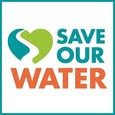 California is entering its third year of drought conditions. With water conservation now a way of life in California, everyone is encouraged to find ways to save water. See tips, tools, and ideas on the Save Our Water website. Information about real time local hydrological conditions, forecasts, and water conditions is available on DWR’s new website California Water Watch. |
Archives
October 2023
Categories
All
|

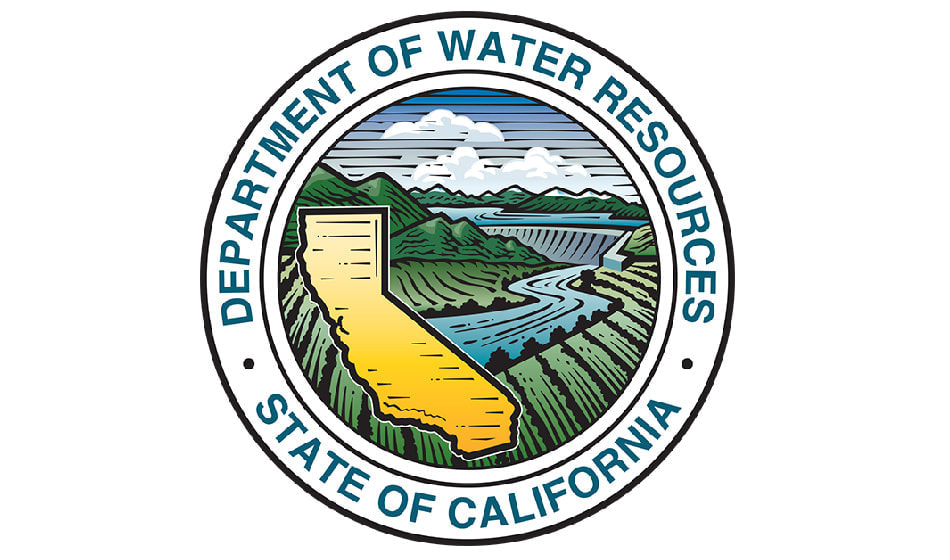
 RSS Feed
RSS Feed